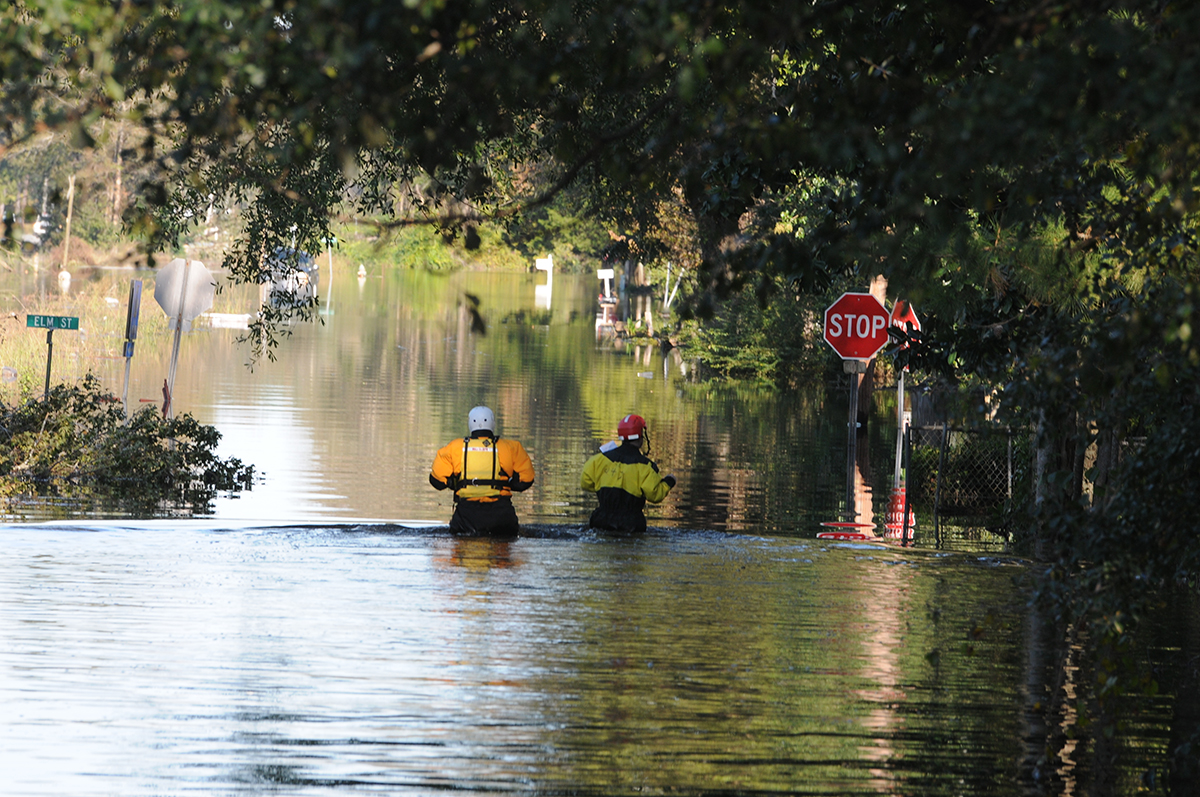
RALEIGH — A broad array of provisions aimed at flood prevention and resilience continues to move forward in this year’s session of the North Carolina General Assembly.
Last week, a House committee approved the latest version of a long-term effort to address the growing risk of widespread flooding. Although driven by catastrophes like Hurricane Matthew and Hurricane Florence, the scope of the legislation recognizes vulnerabilities to flooding throughout the state.
Supporter Spotlight
“This bipartisan measure reflects input from leaders across the entire state of North Carolina that have taken the brunt of a number of these storms,” House Majority Leader John Bell, R-Wayne, said Wednesday while introducing the latest iteration of the House efforts, House Bill 500, the Disaster Mitigation and Relief Act of 2021, to the House Environment Committee. “It’s my opinion that it’s time to address these challenges and be proactive in a comprehensive way. That’s why we’re focused on real solutions that we can protect homes livelihoods, communities and infrastructure.”

It’s evident, he said, that the state needs a comprehensive strategy to address flooding and resiliency.
The House legislation follows a set of provisions introduced in the Senate earlier in the session and a set of strategies proposed by Gov. Roy Cooper in his budget proposal in March.
At the heart of all three plans is an attempt to use what’s been learned through recent disasters along with advances in science and technology to get ahead of future disasters.
Bell said the more than $290 million in new spending in the bill represents one of the largest investments to deal with flooding in the state’s history, but it’s intended to break a cycle of flooding and recovery that’s cost more than $3.5 billion spent in recent years.
Supporter Spotlight
Committee chair Rep. Pat McElraft, R-Carteret, said that when the House first started looking at resiliency there wasn’t enough money to do what was needed. She said that now the state has enough in its rainy day funds to move forward.

“We finally have some money to put into resiliency, and to prevent these kinds of things from happening, instead of looking at fixing homes after it’s flooded,” McElraft said.
Bell co-chaired the House Select Committee on Disaster Relief, which was established in 2017 to track the recovery from Hurricane Matthew, then the costliest natural disaster in state history.
The select committee reviewed the long history of proposals for how to deal with riverine flooding, particularly along choke points in the Neuse River basin. Their work was interrupted and dramatically altered by Hurricane Florence in 2018, which dwarfed Matthew in rainfall, reexposed the extensive flooding vulnerabilities in eastern North Carolina and revealed new infrastructure and transportation faults.
As much as the major disasters in eastern North Carolina were an impetus for a flood mitigation and resilience strategy, the growing frequency of intense rain events and flooding in other parts of the state have given the effort an extra boost in the legislature.
Will McDow, who helped lead negotiations on the bill for the Environmental Defense Fund, said the bill, and ultimately, the flooding legislation that is likely to come out of the session and be signed by the governor, is a strong recognition across government that there’s a need and an opportunity to rev up resiliency efforts.

“This is something that both chambers and the governor recognize is a critical issue,” he said. “And so, you know when you get that level of consistency in recognition, it creates opportunities.”
Environmental Defense Fund and other environmental groups have supported both House and Senate bills partly because they both lean into the idea of leveraging natural lands.
“We appreciate the sponsors’ commitment to natural solutions as one tool in the toolbox to prepare our state for to make our state more prepared for floods,” Will Robinson, director of government relations for the Nature Conservancy in North Carolina, told House members last week.
‘Works in progress’
The bills in the works now are evolving and to become law will require a lot of negotiation and perhaps some luck, especially given the recent breakdown in budget discussions in Raleigh.
Bell called House Bill 500 “a working document” that will change as it moves through the process. Some or all of it could be folded into the budget or, if the legislature adopts another “mini-budget” system in lieu of an actual budget, be rolled into one or more standalone bills.
Here’s a breakdown of main provisions of the bill:
• Permanently establishes the North Carolina Office of Recovery and Resiliency and adds up to 19 new positions with responsibilities for statewide flood mitigation and resiliency.
• Allocates $20 million for a statewide flood resilience blueprint.
• Allocates $32 million for Neuse River buyouts, levee and railroad projects.
• Allocates $36.5 million for Lumber River buyouts, dam repairs, levee and railroad projects.
• Earmarks $5 million for Southport waterfront stabilization and $14 million for Boiling Springs Lake dam repairs.
• Establishes the state Disaster Relief and Mitigation Fund and Transportation Infrastructure Resiliency Fund with an initial $40 million appropriation for grants.
• Adds $30 million to the Coastal Storm Damage Mitigation Fund for living shorelines, oyster reefs and marsh restoration.
• Funds planning grants and four new positions at the Division of Coastal Management for the Resilient Coastal Communities program.
• Adds $20 million to the state’s Land and Water Fund for restoration of floodplains and wetlands to increase their capacity to store water and reduce flooding.
• Allocates $30 million to the Department of Environmental Quality’s Division of Mitigation Services to create a pilot program to address chronic flooding along Stoney Creek in Wayne County and other flood mitigation projects.
House Bill 500 is expected to be taken up next by the House Appropriations Committee, but so far no hearings have been scheduled.







